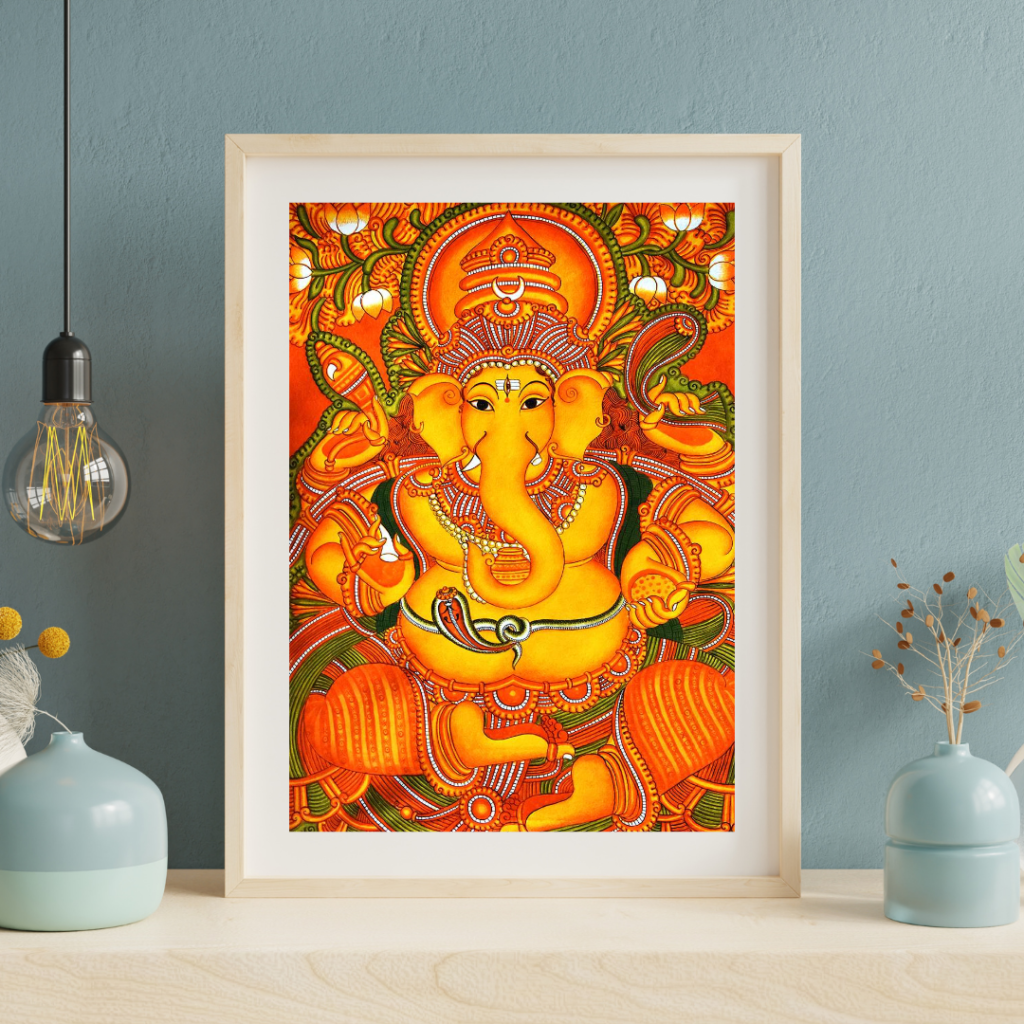
Traditional Indian art is a treasure trove of symbolism, where every motif, color, and pattern holds profound meaning. Rooted in ancient traditions, these artworks are not just decorative but also convey stories, spiritual concepts, and cultural values. At Artsaisle, we celebrate the depth of Indian art by curating pieces that carry these timeless symbols. Let’s delve into some of the most common motifs in traditional Indian art and uncover their meanings.
1. The Lotus: Purity and Enlightenment
The lotus is a recurring motif in Indian art, symbolizing purity, beauty, and spiritual awakening. Its ability to bloom in muddy waters reflects resilience and detachment from materialism, making it a prominent element in depictions of deities like Lakshmi and Saraswati.
2. Peacocks: Beauty and Prosperity
The peacock, India’s national bird, represents beauty, grace, and prosperity. Often seen in Mughal and Rajasthani paintings, it is also associated with Lord Krishna, symbolizing divine love and playfulness.
3. Mandalas: Cosmic Balance
Mandalas are intricate geometric designs that symbolize the universe and the concept of cosmic balance. Used in meditation and spiritual practices, they are often featured in Indian temple art and Tibetan Buddhism.
4. Elephants: Strength and Wisdom
Elephants appear frequently in Indian art, representing strength, wisdom, and royalty. The image of Ganesha, the elephant-headed god, embodies intellect and the removal of obstacles.
5. Kalasha: Abundance and Auspiciousness
The kalasha, a sacred pot often filled with water and topped with mango leaves and a coconut, symbolizes abundance and purity. It is a common motif in festival art and temple murals.
6. The Tree of Life: Interconnectedness
The tree of life is a universal symbol found in many Indian art forms, representing the connection between earth, heaven, and all living beings. It signifies growth, vitality, and eternal life.
7. Mythological Creatures: Divine Powers
Creatures like Garuda, the eagle mount of Vishnu, and Nandi, the bull mount of Shiva, carry symbolic meanings of loyalty, power, and devotion. These are often depicted in temple sculptures and traditional paintings.
8. Swastika: Good Fortune
The swastika, an ancient symbol of good fortune and well-being, is frequently used in Indian art and rituals. It predates its unfortunate misuse in modern history and remains a revered emblem in Hindu, Jain, and Buddhist cultures.
Why Symbolism Matters in Indian Art
Symbolism in Indian art is deeply intertwined with the country’s spiritual and cultural heritage. These motifs are not just aesthetic elements but also carriers of philosophical and moral lessons that have been passed down through generations.
Artsaisle: Where Symbolism Meets Craftsmanship
At Artsaisle, we honor the rich symbolism of Indian art by offering pieces that embody these timeless motifs. Whether it’s a lotus-themed painting, a peacock-inspired decor piece, or a mandala wall hanging, our collection allows you to bring the stories and values of Indian art into your home.
Traditional Indian art is a celebration of culture, spirituality, and creativity. By understanding the meanings behind these motifs, we can appreciate the profound artistry and connect with the heritage they represent. Explore the world of symbolic Indian art with Artsaisle and discover pieces that speak to your soul.

